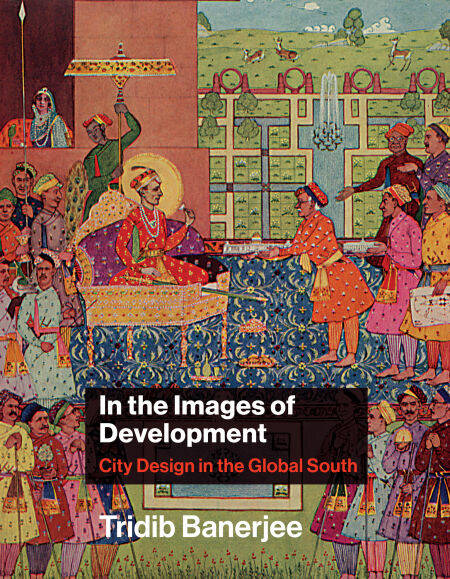
- Afhalen na 1 uur in een winkel met voorraad
- Gratis thuislevering in België vanaf € 30
- Ruim aanbod met 7 miljoen producten
- Afhalen na 1 uur in een winkel met voorraad
- Gratis thuislevering in België vanaf € 30
- Ruim aanbod met 7 miljoen producten
Zoeken
€ 44,35
+ 44 punten
Uitvoering
Omschrijving
The urban legacy of the Global South since the colonial era and how sustainable development and environmental and social justice can be achieved.
Remarkably little of the expansive literature on development and globalization considers actual urban form and the physical design of cities as outcomes of these phenomena. The development that has shaped historic transformations in urban form and urbanism—and the consequent human experiences—remains largely unexplored. In this book, Tridib Banerjee fills this void by linking the idea of development with those of urbanism, urban form, and urban design, focusing primarily on the contemporary cities in the developing world—the Global South—and their intrinsic prospects in city design. Further, he examines the endogenous possibilities for the future design of these cities that may address growing inequality and the environmental crisis.
Banerjee deftly traces the urban legacy of the Global South from the beginning of the colonial era, closely examining the economic, political, and ideological forces that influenced colonial and postcolonial development, drawing from relevant experiences of different cities in the developing world and discussing the arguments for the historic parity of these cities with their Western counterparts. Finally, Banerjee considers essential notions of future city design that are grounded in the critical challenges of sustainable development, equity, environmental and social justice, and diversity, and how such outcomes can be achieved. This book serves as the opening of a long overdue conversation among design, development, and planning scholars and practitioners, and those interested in the urban development of the Global South.
Remarkably little of the expansive literature on development and globalization considers actual urban form and the physical design of cities as outcomes of these phenomena. The development that has shaped historic transformations in urban form and urbanism—and the consequent human experiences—remains largely unexplored. In this book, Tridib Banerjee fills this void by linking the idea of development with those of urbanism, urban form, and urban design, focusing primarily on the contemporary cities in the developing world—the Global South—and their intrinsic prospects in city design. Further, he examines the endogenous possibilities for the future design of these cities that may address growing inequality and the environmental crisis.
Banerjee deftly traces the urban legacy of the Global South from the beginning of the colonial era, closely examining the economic, political, and ideological forces that influenced colonial and postcolonial development, drawing from relevant experiences of different cities in the developing world and discussing the arguments for the historic parity of these cities with their Western counterparts. Finally, Banerjee considers essential notions of future city design that are grounded in the critical challenges of sustainable development, equity, environmental and social justice, and diversity, and how such outcomes can be achieved. This book serves as the opening of a long overdue conversation among design, development, and planning scholars and practitioners, and those interested in the urban development of the Global South.
Specificaties
Betrokkenen
- Auteur(s):
- Uitgeverij:
Inhoud
- Aantal bladzijden:
- 520
- Taal:
- Engels
- Reeks:
Eigenschappen
- Productcode (EAN):
- 9780262361125
- Verschijningsdatum:
- 7/06/2021
- Uitvoering:
- E-book
- Beveiligd met:
- Adobe DRM
- Formaat:
- ePub

Alleen bij Standaard Boekhandel
+ 44 punten op je klantenkaart van Standaard Boekhandel
Beoordelingen
We publiceren alleen reviews die voldoen aan de voorwaarden voor reviews. Bekijk onze voorwaarden voor reviews.








